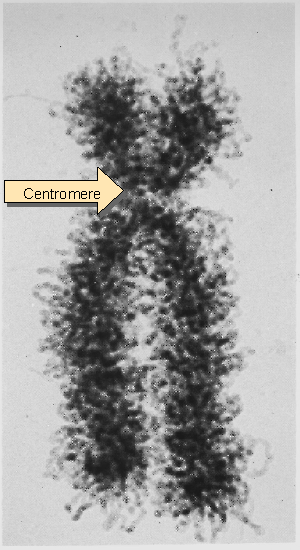1. Introduction
19.1 Introduction |
| Key terms defined in this section |
| Histones are conserved DNA-binding proteins of eukaryotes that form the nucleosome, the basic subunit of chromatin. Nucleosome is the basic structural subunit of chromatin, consisting of ~200 bp of DNA and an octamer of histone proteins. |
Chromatin has a compact organization in which most DNA sequences are structurally inaccessible and functionally inactive. Within this mass is the minority of active sequences. What is the general structure of chromatin, and what is the difference between active and inactive sequences? The high overall packing ratio of the genetic material immediately suggests that DNA cannot be directly packaged into the final structure of chromatin. There must be hierarchies of organization.
The fundamental subunit of chromatin has the same type of design in all eukaryotes. The nucleosome contains ~200 bp of DNA, organized by an octamer of small, basic proteins into a bead-like structure. The protein components are histones. They form an interior core; the DNA lies on the surface of the particle. Nucleosomes are an invariant component of euchromatin and heterochromatin in the interphase nucleus, and of mitotic chromosomes. The nucleosome provides the first level of organization, giving a packing ratio of ~6. Its components and structure are well characterized.
 |
Figure 18.9 The sister chromatids of a mitotic pair each consist of a fiber (~30 nm in diameter) compactly folded into the chromosome. Photograph kindly provided by E. J. DuPraw. |
The second level of organization is the coiling of the series of nucleosomes into a helical array to constitute the ~30 nm fiber that is found in both interphase chromatin and mitotic chromosomes (see Figure 18.9). In chromatin this brings the packing ratio of DNA to ~40. The structure of this fiber requires additional proteins, but is not well defined.
The final packing ratio is determined by the third level of organization, the packaging of the fiber itself. This gives an overall packing ratio of ~1000 in euchromatin, cyclically interchangeable with packing into mitotic chromosomes to achieve an overall ratio of ~10,000. Heterochromatin generally has a packing ratio ~10,000 in both interphase and mitosis.
We need to work through these levels of organization to characterize the events involved in cyclical packaging, replication, and transcription. We assume that association with additional proteins, or modifications of existing chromosomal proteins, are involved in changing the structure of chromatin. We do not know the individual targets for controlling cyclical packaging. Both replication and transcription require unwinding of DNA, and thus must involve an unfolding of the structure that allows the relevant enzymes to manipulate the DNA. This is likely to involve changes in all levels of organization.
When chromatin is replicated, the nucleosomes must be reproduced on both daughter duplex molecules. As well as asking how the nucleosome itself is assembled, we must inquire what happens to other proteins present in chromatin. Since replication disrupts the structure of chromatin, it both poses a problem for maintaining regions with specific structure and offers an opportunity to change the structure.
The mass of chromatin contains up to twice as much protein as DNA. Approximately half of the protein mass is accounted for by the nucleosomes. The mass of RNA is < 10% of the mass of DNA. Much of the RNA consists of nascent transcripts still associated with the template DNA.
The nonhistones include all the proteins of chromatin except the histones. They are more variable between tissues and species, and they comprise a smaller proportion of the mass than the histones. They also comprise a much larger number of proteins, so that any individual protein is present in amounts much smaller than any histone.
The functions of nonhistone proteins include control of gene expression and higher-order structure. So RNA polymerase may be considered to be a prominent nonhistone. The HMG (high-mobility group) proteins comprise a discrete and well-defined subclass of nonhistones (at least some of which are transcription factors). A major problem in working with other nonhistones is that they tend to be contaminated with other nuclear proteins, and so far it has proved difficult to obtain those nonhistone proteins responsible for higher-order structures.